Not only is it a beautiful coastal area with fresh air, Do Son district also has many historical and religious relics to form a unique spiritual tour.
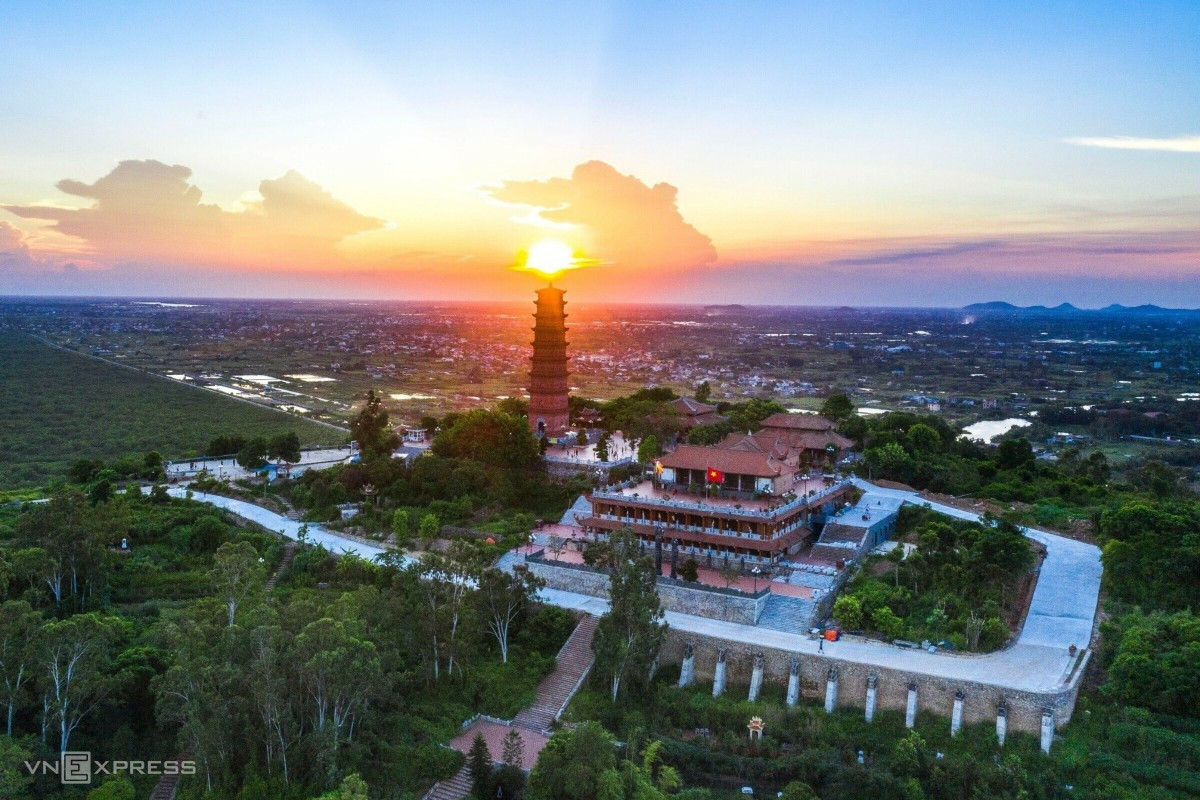
Tuong Long Tower is located on the top of Long Son, 95.2 m above sea level, the highest mountain in the Cuu Long range in Do Son peninsula.
According to some studies, the tower was built in 1058, during the reign of King Ly Thanh Tong. Legend has it that this is a place where "mountains and water gather" and thus capture the sacred energy of heaven and earth. Along with Bao Thien tower in Thang Long capital, Tuong Long tower is one of the two most magnificent Buddhist structures during the Ly dynasty (1010-1225) when Buddhism flourished and was honored as the national religion.
After thousands of years, the ancient tower only has a square foundation left. The current tower is a 9-storey, square, 37.14 m high reconstruction version, inaugurated in 2017 to celebrate the 10th anniversary of the establishment of Do Son district.
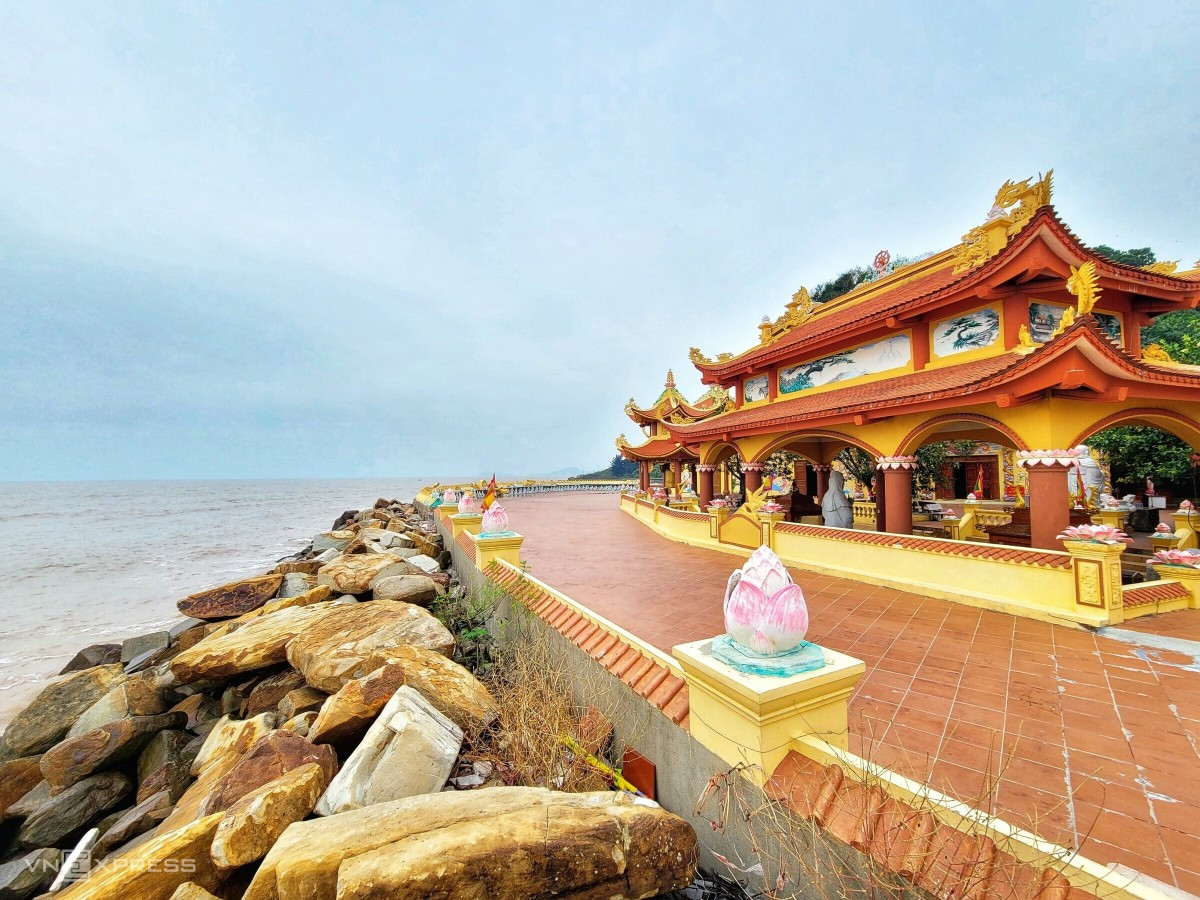
Ba De Temple in Ngoc Hai Ward is a famous temple in Hai Phong worshiping Dao Thi Huong, wife of Lord Trinh Giang. The temple was later granted the title "Dong Nhac De Ba - Trinh Lord's wife" by King Tu Duc.
Initially, the temple had a simple structure, nestled against the back of Doc Mountain, facing the ocean. Currently, the temple has been restored to be more spacious.
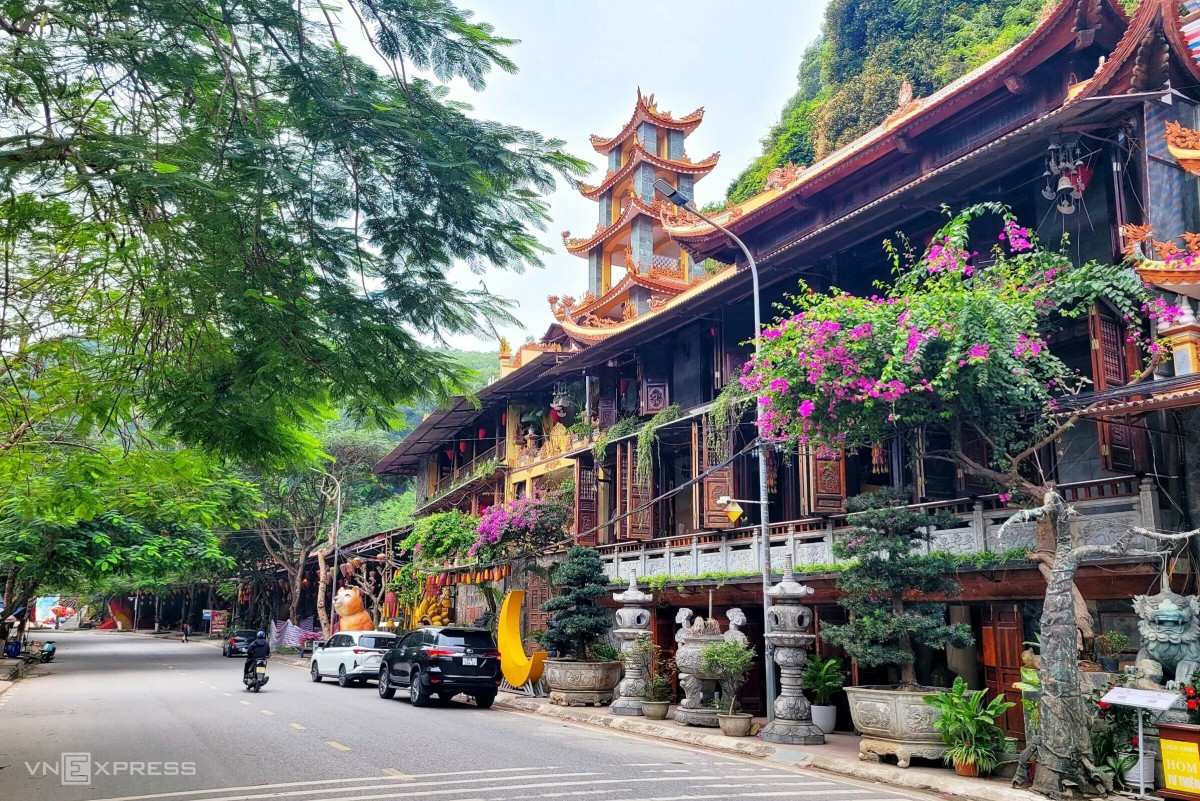
Hang Pagoda, whose Chinese name is Coc Tu, is located in Zone 1, Van Son Ward, Do Son District. Many researchers believe that this is the first place where Buddhism was introduced to our country, before reaching Luy Lau - Dau area, Thuan Thanh District, Bac Ninh. Currently, in front of the pagoda, there is a large board introducing this story.
The ancients built the pagoda from a mountain cave 3.5 m high and 7 m wide, divided into 2 steps. The outer step is about 23 m2 wide, the inner step is about 0.5 m higher. Therefore, the cave is trapezoidal, going straight into the mountain for about 25 m.
The pagoda is hidden deep in the mountain and faces Do Son sea. Outside is a statue of Buddha Quan Am, on the right is the ancestral shrine, followed by the tower. On the mountain are dragon and phoenix statues, at the foot of the mountain are statues of the divine turtle and carp.
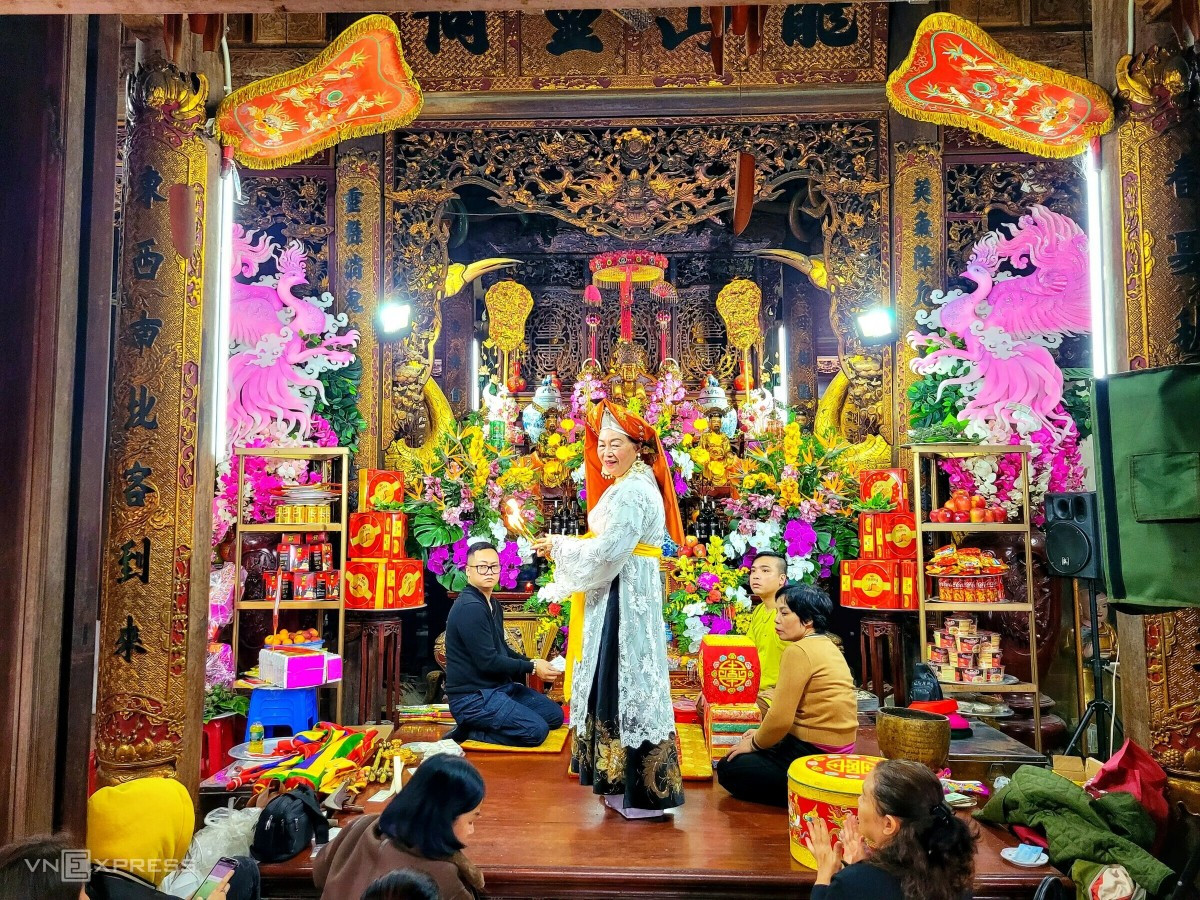
Long Son Temple is located in Ngoc Xuyen Ward, worshiping Miss Chin and the system of gods in the Tam Phu and Tu Phu worshipping belief. Next to the temple is a stream of clear, cool water that flows continuously despite natural disasters and droughts, called Dragon Stream. Therefore, the locals call it Miss Chin Dragon Stream Temple.
This is a sacred temple that attracts many visitors from all over the world to worship on the first days of the month and the full moon day. The temple also regularly hosts the worshiping of the monkeys, a cultural heritage recognized by UNESCO.
Near Long Son Temple, there is also an ancient fig forest with 17 ancient fig trees that have just been recognized by the Vietnam Association for Conservation of Nature and Environment (VACNE) as a Vietnamese heritage tree complex.
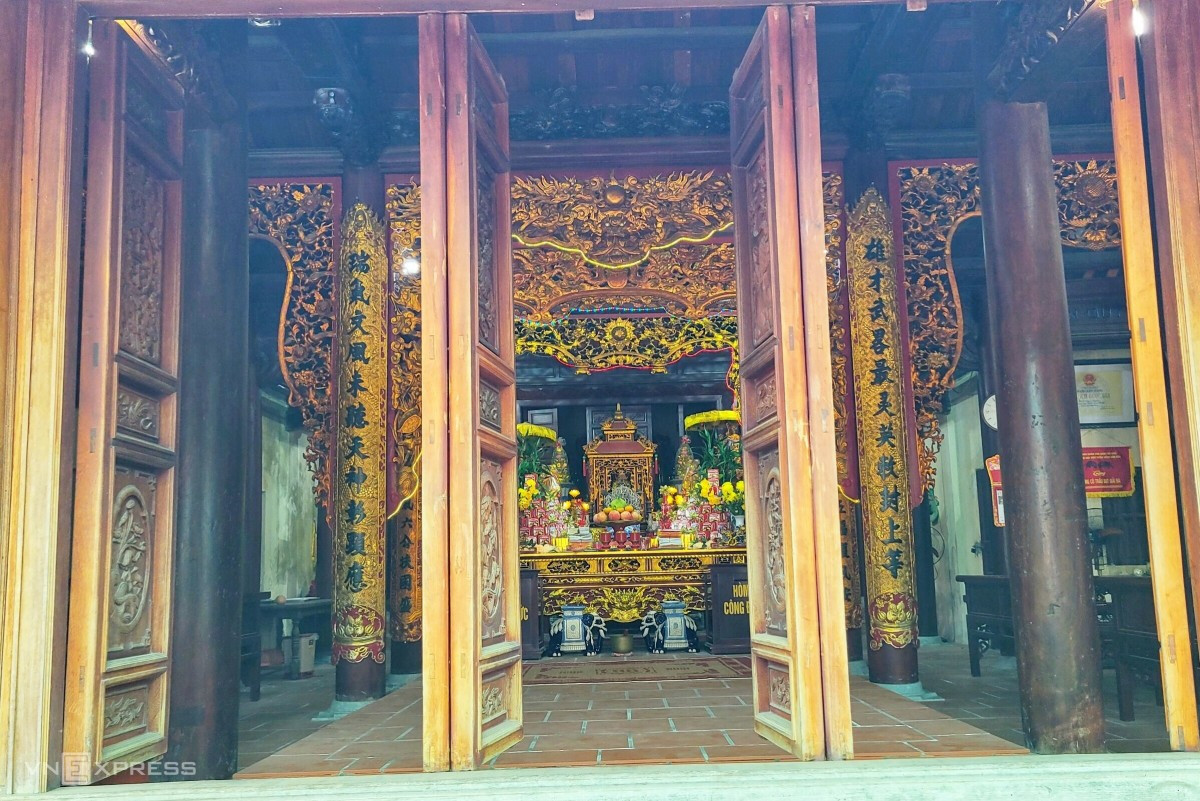
Located next to Long Son Temple is Ngoc Xuyen Communal House, dating from the late 17th and early 18th centuries, worshiping Than Diem Tuoc, the water god of Do Son and also the common tutelary god of this entire land.
The old communal house had 9 roofs, made of mahogany and cinnamon wood, covered with Vietnamese tiles, designed in the style of the royal palace. In 1929, the communal house was rebuilt in the shape of the letter Dinh with 5 main worship rooms and 3 rear rooms following the architectural art of the Nguyen Dynasty. The communal house has a splendid interior, decorated with carvings and splendid gilded lacquer.
During the 9-year resistance war against the French, Ngoc Xuyen Communal House was the place to receive and see off new recruits, and a secret meeting place for cadres. In 2007, Ngoc Xuyen Communal House was ranked as a "National Historical, Cultural and Architectural Relic" by the Ministry of Culture, Sports and Tourism.
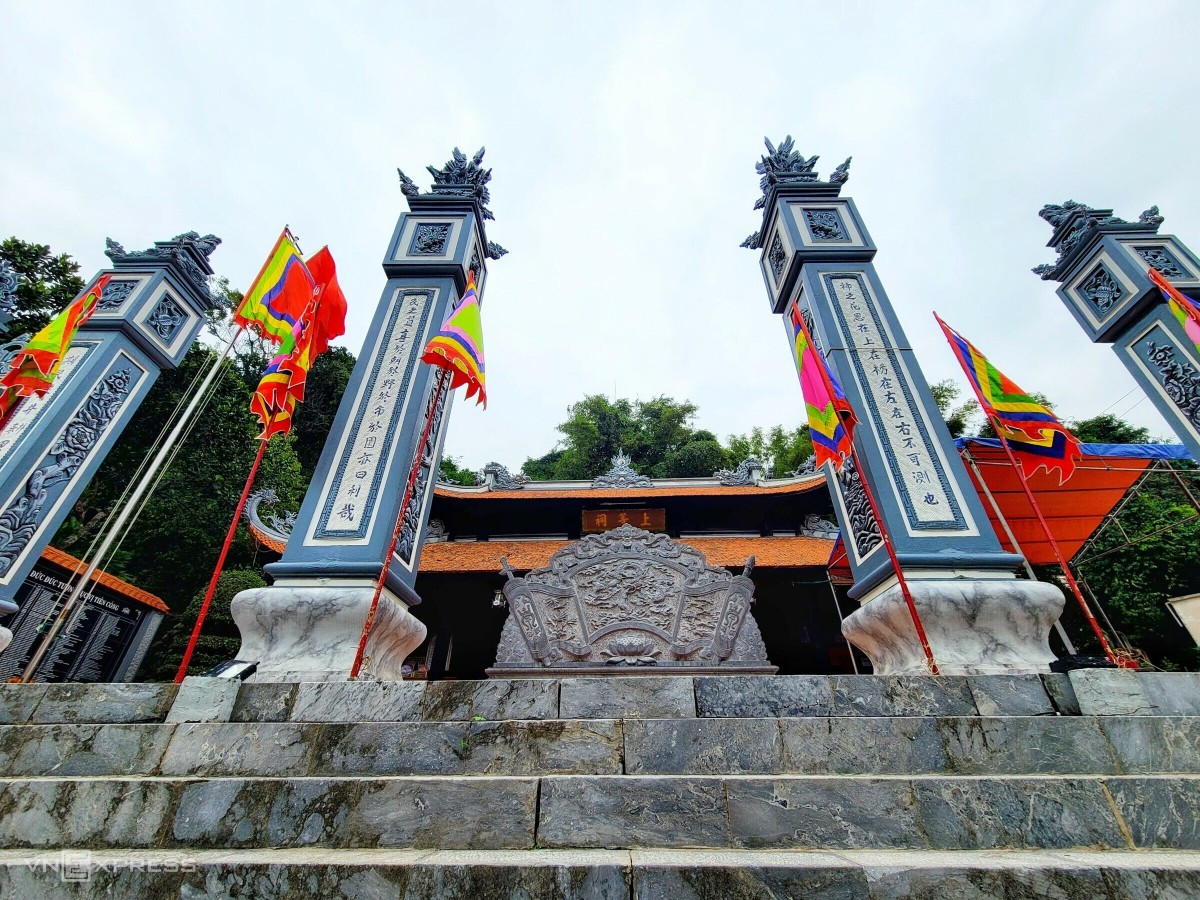
Nghe Temple is an ancient cultural work, located on Suoi Rong Street in Van Huong Ward, Do Son District, a city-level historical and cultural relic.
The temple was built halfway up the mountain, belonging to the "communal line" of Do Son, and is respected by the people of this coastal area because it worships 6 gods who contributed to the founding of Do Son. Nghe Temple is also associated with the traditional buffalo fighting festival, when before and after the festival, this is where the people and the hamlets and wards gather to worship.
The relic converges both tangible and intangible elements to become a very valuable cultural heritage, built and existing in a cultural space imbued with national identity.
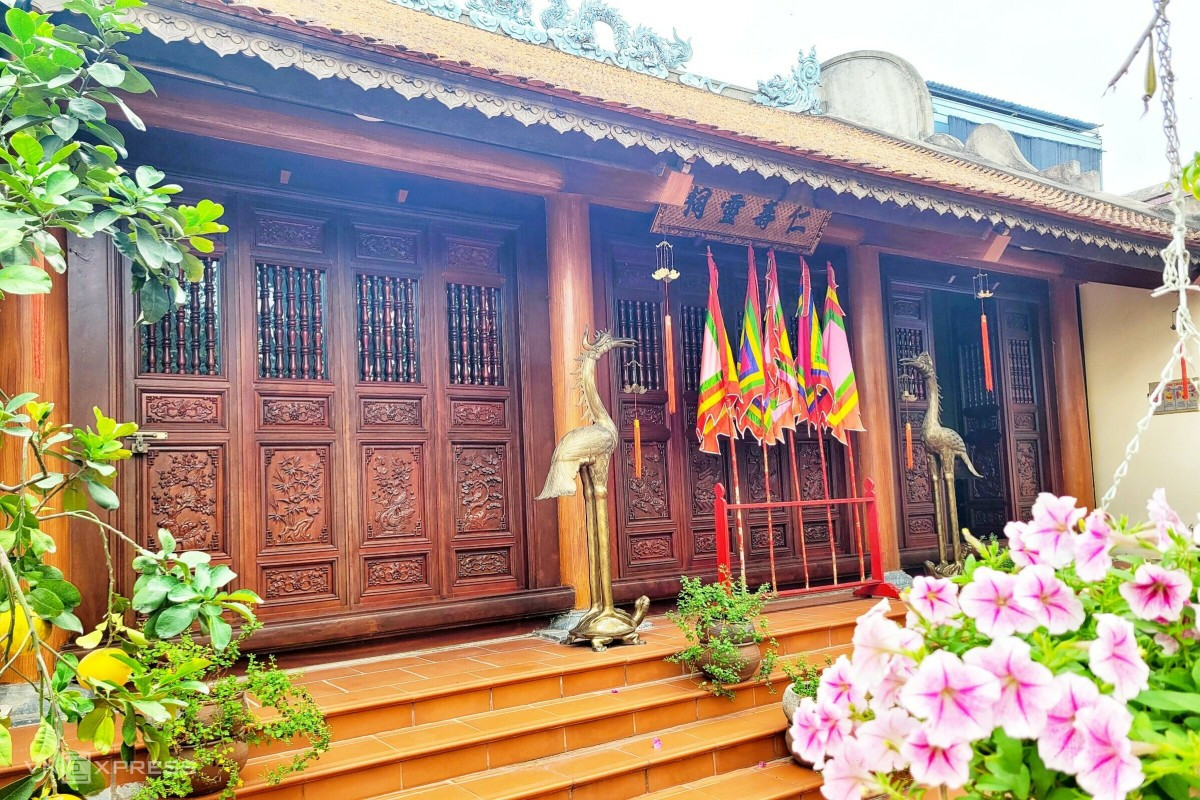
Mau Vung Temple is located in Hai Son Ward, formerly known as Vung Temple. Legend has it that in front of the temple was a branch of a river, three pieces of wood drifted from the sea, the villagers were told in a dream and built a temple to worship. The three pieces of wood drifted back and later grew into a Barringtonia acutangula tree in front of the temple. The residential area near the temple was therefore named Vung Hamlet.
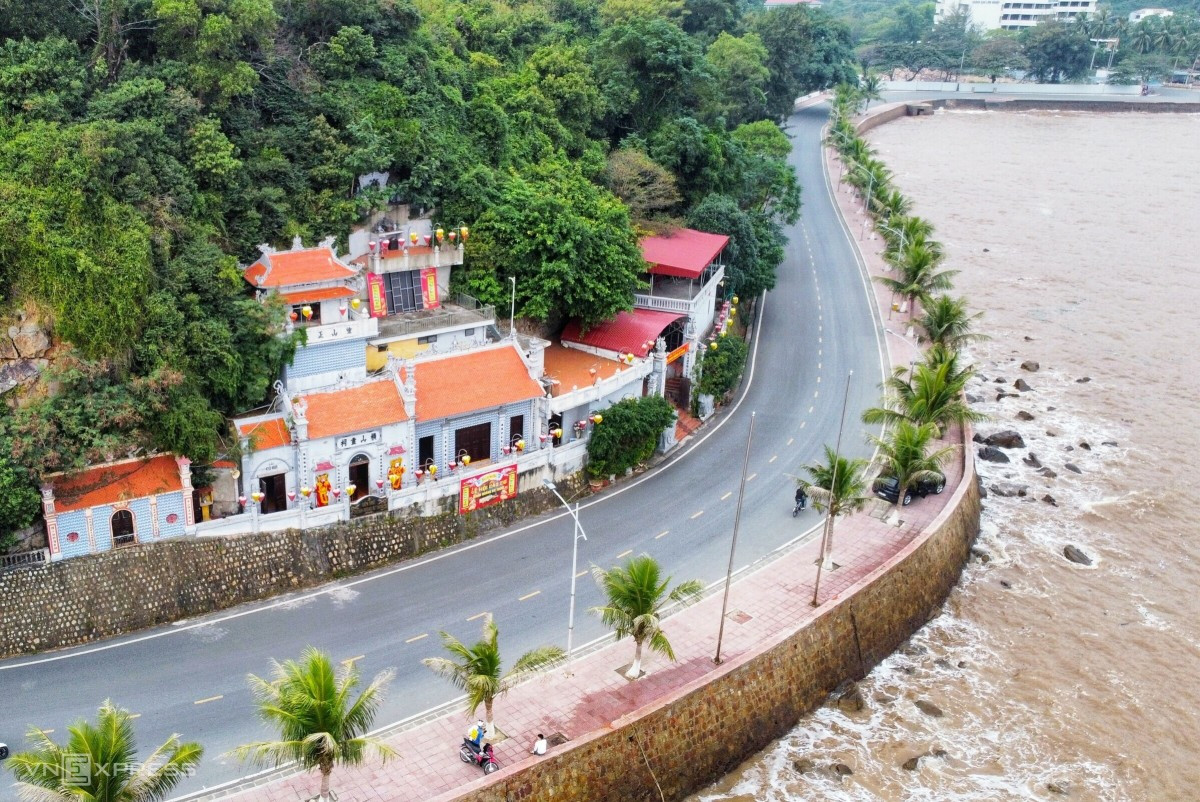
Van Ngang Temple, formerly known as Thuy Tien Am, was built in the 3rd year of Thai Ninh under the Ly Dynasty, made of bamboo, wooden walls, and thatched roofs to worship the Saints and Immortals.
During the reign of King Le Than Tong, the temple was built with bricks and tiled roofs in the shape of the Chinese character “nhi”, with a three-door gate, a nine-heaven platform, and a horse-riding stele. The temple was named Hoanh Son Linh Tu. In 1886, this ancient temple was destroyed by the French to make way for the construction of the Northern Governor’s Rest House. Later, the people and contractors rebuilt a small temple, but in 1974, the small temple was also destroyed.
Through the ups and downs of history, Van Ngang Temple was restored in March 1991 with its back leaning against the mountain and facing the sea.
According to legend, this is where the scholar Nguyen Binh Khiem established a poetry reading association.
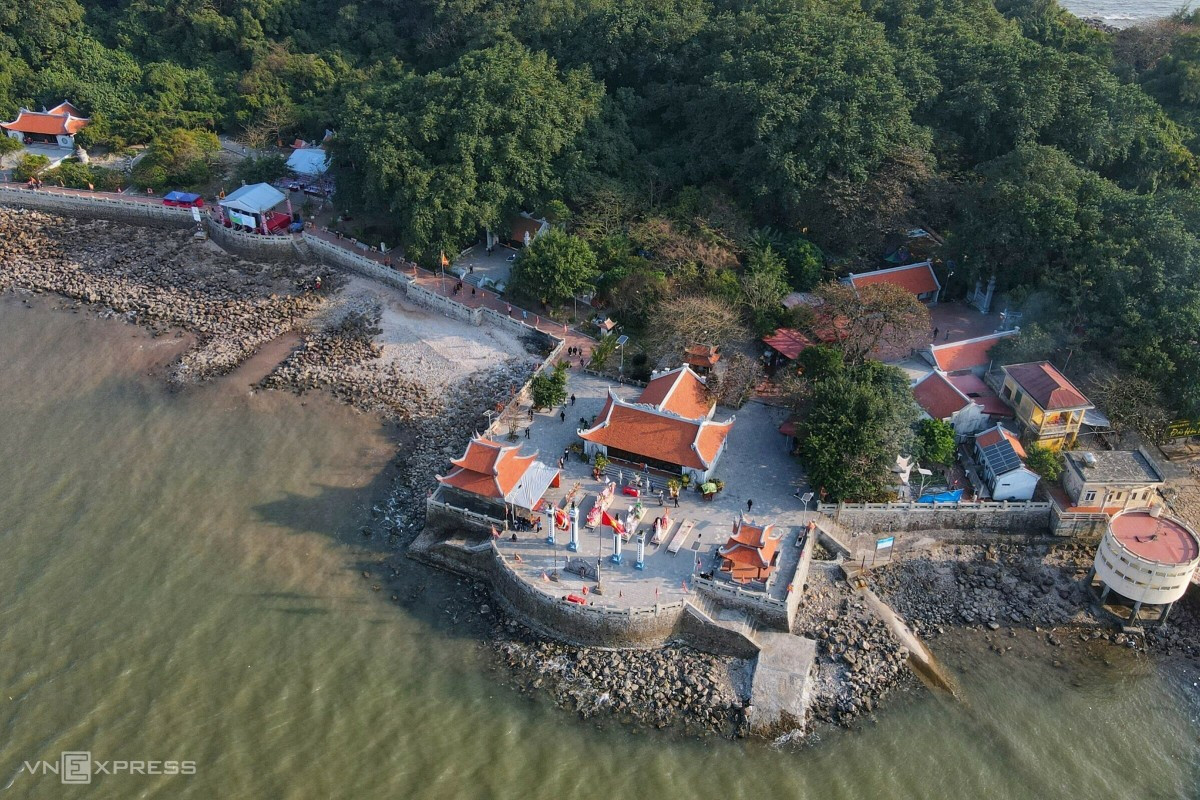
Nam Hai Than Vuong Temple, worshiping a Tran Dynasty general who died in the battle against the invading Yuan-Mongol army, is the most famous on Dau Island.
Dau Island or Hon Dau Island, in Do Son district, Hai Phong city, about 700 m from the mainland.
According to legend, on the 9th day of the 2nd lunar month in 1288, fishermen fishing near Dau Island discovered a body and brought it to the island. Through the clothes and what was collected, people recognized that this was a Tran Dynasty general who had sacrificed himself and drifted here. After that, people built a temple to commemorate his merits, respectfully calling him "Old God of the Island".
During the Le Dynasty, when King Le inspected the Do Son area and stayed overnight on the island, he bestowed upon the general the title "Old Island God King". During the reign of King Tu Duc, he was given the title of Nam Hai God King.
In addition to the Nam Hai Than Vuong temple, on the island there are also Son Lam temple - pagoda, Mau temple, Dong Phuong temple - pagoda and Nam Phuong temple - pagoda.
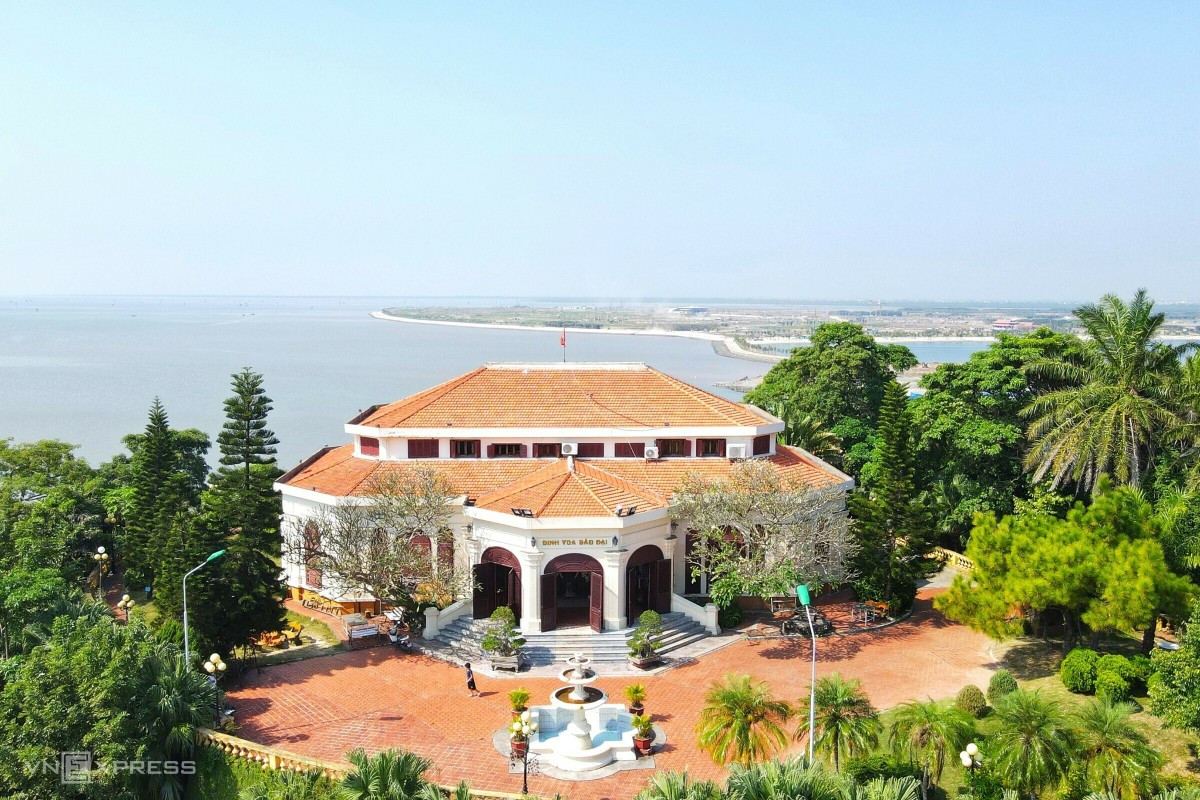
Bao Dai Palace has an area of 1,000 m2 located in a campus of more than 3,700 m2 on top of Vung hill, in zone 2 Do Son, Van Huong ward.
Bao Dai Palace was built in 1928 by the Governor General of Indochina in a prime location in Do Son as a resort, then given to King Bao Dai.
The building is built in an octagonal shape, typical French architecture with two floors and a basement. The foundation is made of laterite. There are gardens in front and behind the mansion.
This mansion was used by King Bao Dai from 1933 to 1954. In 1955, Hai Phong was liberated, and Bao Dai mansion was managed by the Ministry of National Defense. In 1984, the Ministry of National Defense handed it over to Do Son Tourism Joint Stock Company.
On September 29, 2020, the People's Committee of Hai Phong City recognized Bao Dai Villa, Van Huong Ward, Do Son District as a tourist destination. Each year, this mansion welcomes about 60,000 visitors. Currently, visitors can rent rooms, organize parties, conferences, and eat at the place where the king and queen of the Nguyen Dynasty once lived.
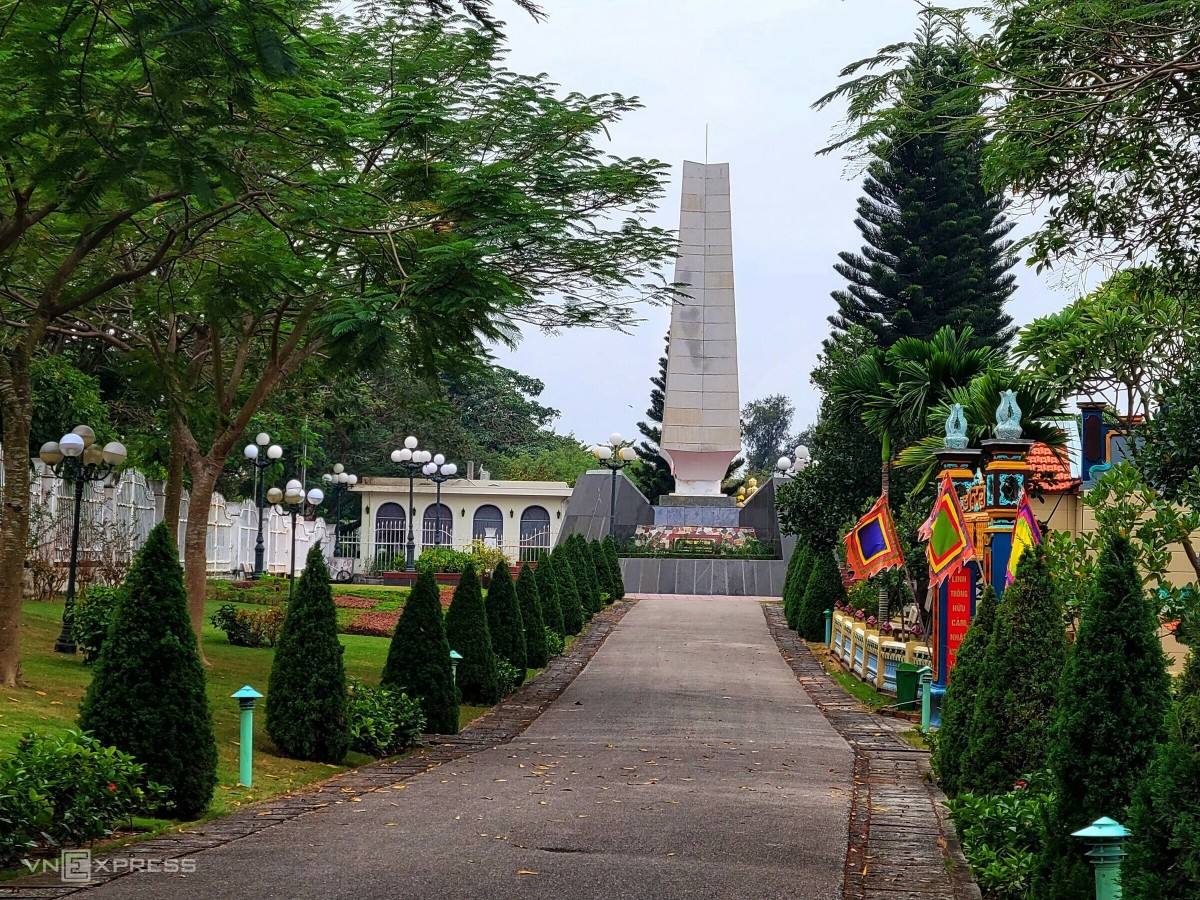
K15 Wharf is located at the foot of Van Hoa hill, Van Huong ward, is a historical landmark marking the departure point of legendary numberless ships.
During the resistance war, hundreds of ships departed from the K15 pier, successfully transporting more than 150,000 tons of weapons, support equipment and tens of thousands of officers and soldiers from the North to the South to aid the battlefield.
On August 18, 2008, K15 wharf was ranked as a national historical relic by the Ministry of Culture, Sports and Tourism.
According to VnExpress